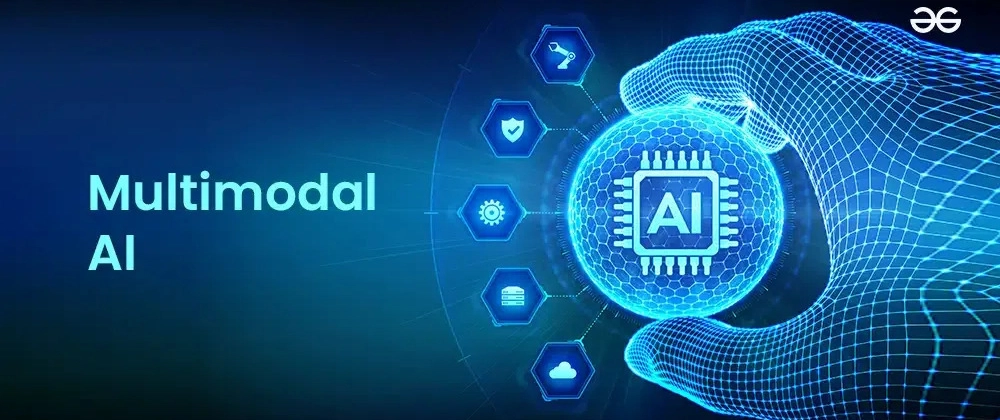Introduction
Artificial Intelligence (AI) has made incredible strides in recent years, but traditional AI models often focus on processing a single type of data—either text, images, audio, or video. Multimodal AI is revolutionizing this approach by integrating multiple types of data simultaneously. By combining vision, language, speech, and even sensor data, multimodal AI creates more intelligent and context-aware systems. In this blog, we’ll explore what multimodal AI is, its applications, benefits, challenges, and the future of this technology.
1. What is Multimodal AI?
Multimodal AI refers to AI systems that can process and interpret multiple types of input data at once. Unlike unimodal AI models that rely on a single mode (e.g., only text or only images), multimodal AI integrates different data modalities to improve understanding and decision-making.
For example:
- A multimodal AI assistant can process voice commands, facial expressions, and gestures simultaneously.
- A self-driving car uses cameras, LiDAR, and GPS to navigate accurately.
- AI models like OpenAI’s GPT-4V can interpret both text and images together for a richer understanding.
2. How Does Multimodal AI Work?
Multimodal AI systems rely on several core technologies:
✅ Feature Extraction: AI extracts meaningful features from different data types (e.g., words from text, objects from images).
✅ Data Fusion: The system combines different data sources to form a unified representation.
✅ Cross-Modal Learning: AI learns relationships between different modalities (e.g., how a caption relates to an image).
✅ Decision Making: The model generates responses, predictions, or actions based on the fused data.
3. Real-World Applications of Multimodal AI
1. AI-Powered Virtual Assistants
- Assistants like Siri, Alexa, and Google Assistant are evolving to process voice, gestures, and facial recognition for improved user interaction.
2. Healthcare & Medical Diagnosis
- AI can analyze medical images (X-rays, MRIs) and patient records (text reports) together to assist in diagnosing diseases.
- Multimodal chatbots can understand patient symptoms via text and voice for better telemedicine services.
3. Autonomous Vehicles
- Self-driving cars integrate camera feeds, LiDAR, GPS, and real-time traffic data to make intelligent driving decisions.
4. Multimodal AI in Content Creation
- AI models like DALL·E generate images from text descriptions.
- Deep learning models like GPT-4V understand both text and images to improve human-AI communication.
5. Multimodal AI in Security & Surveillance
- AI can process video feeds, facial recognition, and audio signals to detect suspicious activity and improve security.
6. Augmented & Virtual Reality (AR/VR)
- AI combines speech, motion tracking, and visual data to create immersive AR/VR experiences in gaming and training simulations.
4. Benefits of Multimodal AI
🚀 Improved Accuracy – Combining multiple data sources reduces errors and increases reliability.
🚀 Enhanced User Experience – AI systems can interact more naturally by understanding multiple input forms.
🚀 Better Decision Making – Multimodal data provides richer context for AI-driven predictions.
🚀 Increased Efficiency – AI models process and analyze data faster by leveraging different modalities.
🚀 More Adaptable AI – AI can work in diverse environments where different types of data are available.
5. Challenges & Limitations
⚠ Data Complexity – Processing multiple types of data requires significant computational power.
⚠ Integration Issues – Merging different data formats (e.g., text, images, audio) is challenging.
⚠ Bias in Multimodal Models – AI may inherit biases from training data, leading to inaccuracies.
⚠ High Resource Demand – Training multimodal AI requires vast datasets and powerful GPUs.
6. The Future of Multimodal AI
The future of AI is multimodal, with advancements expected in:
- AI-Powered Search Engines – Next-gen search engines will process text, images, and voice queries together.
- AI-Powered Robotics – Robots will interact with humans using multiple sensory inputs.
- AI in Education – Multimodal AI will provide personalized learning experiences based on students’ reading, speech, and engagement levels.
- AI in Creativity – Future AI tools will create videos, music, and art by understanding multiple data types together.
Conclusion
Multimodal AI is shaping the next era of artificial intelligence by enabling systems to process and understand multiple types of data simultaneously. From healthcare and autonomous vehicles to content creation and security, its applications are vast and growing. As AI continues to evolve, multimodal learning will be a key driver in making AI more intuitive, human-like, and efficient.
Are you excited about the future of multimodal AI? Let us know your thoughts in the comments below!



Top comments (0)